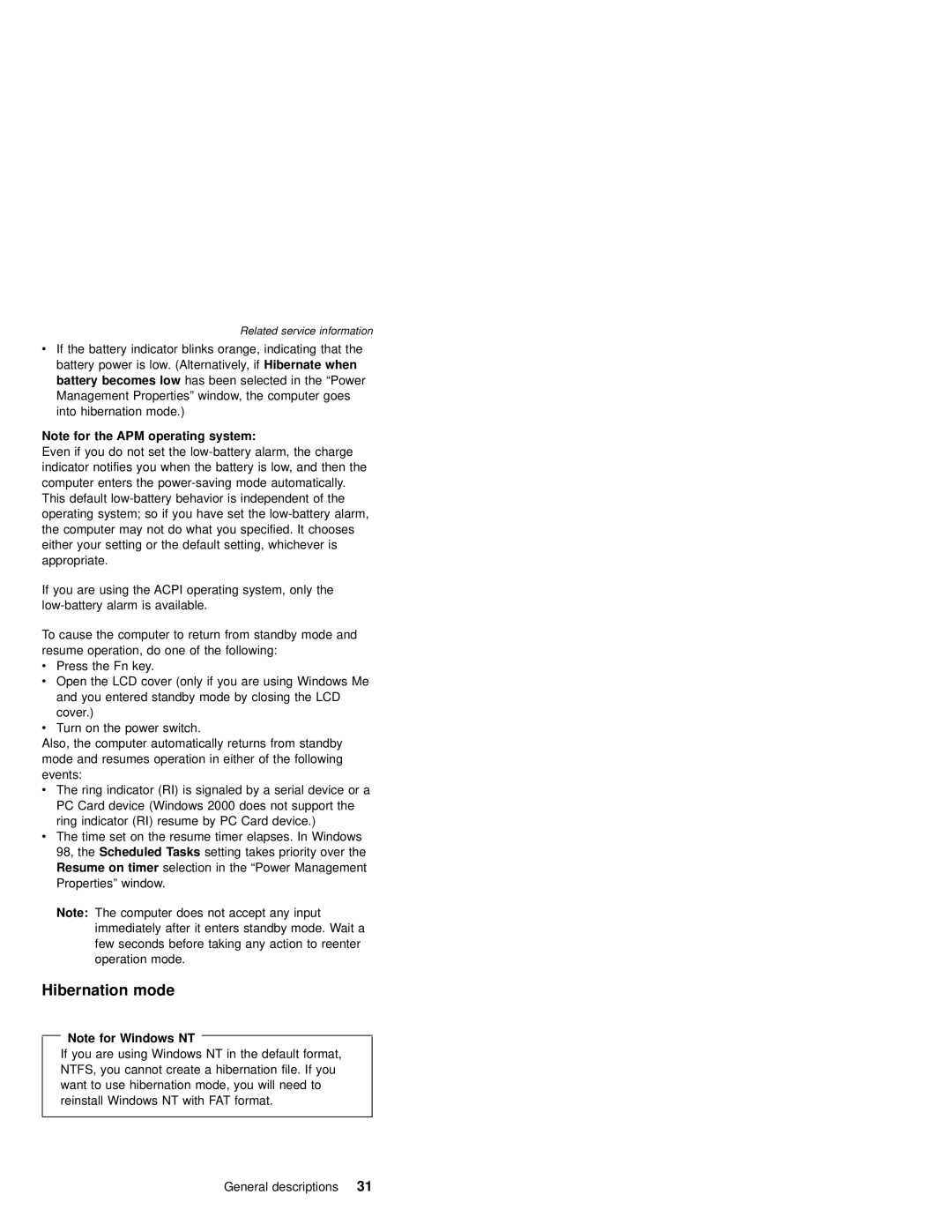
Related service information
vIf the battery indicator blinks orange, indicating that the battery power is low. (Alternatively, if Hibernate when battery becomes low has been selected in the “Power Management Properties” window, the computer goes into hibernation mode.)
Note for the APM operating system:
Even if you do not set the
If you are using the ACPI operating system, only the
To cause the computer to return from standby mode and resume operation, do one of the following:
vPress the Fn key.
vOpen the LCD cover (only if you are using Windows Me and you entered standby mode by closing the LCD cover.)
vTurn on the power switch.
Also, the computer automatically returns from standby mode and resumes operation in either of the following events:
vThe ring indicator (RI) is signaled by a serial device or a PC Card device (Windows 2000 does not support the ring indicator (RI) resume by PC Card device.)
vThe time set on the resume timer elapses. In Windows 98, the Scheduled Tasks setting takes priority over the Resume on timer selection in the “Power Management Properties” window.
Note: The computer does not accept any input immediately after it enters standby mode. Wait a few seconds before taking any action to reenter operation mode.
Hibernation mode
Note for Windows NT
If you are using Windows NT in the default format, NTFS, you cannot create a hibernation file. If you want to use hibernation mode, you will need to reinstall Windows NT with FAT format.
General descriptions 31
